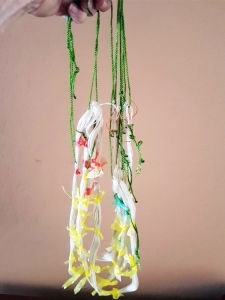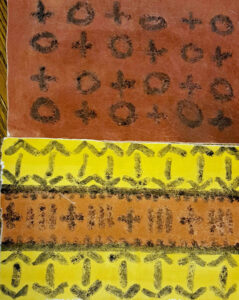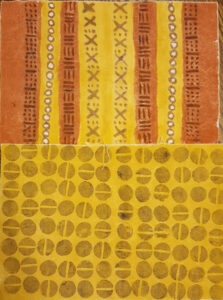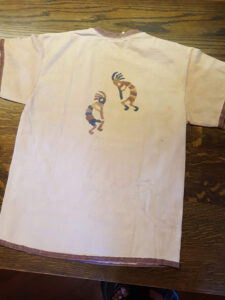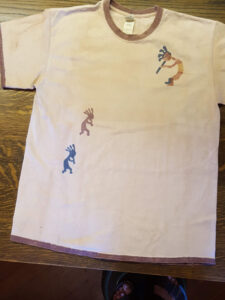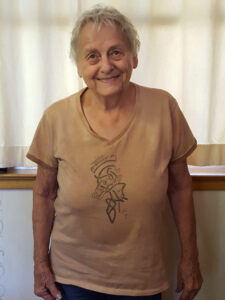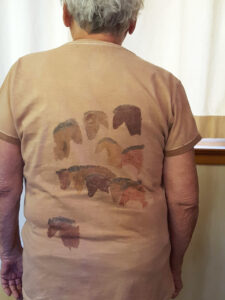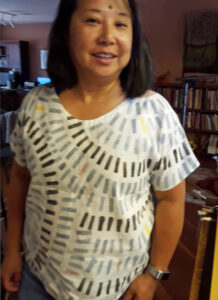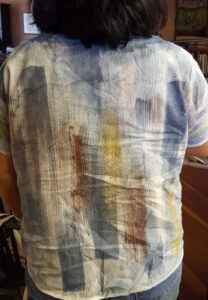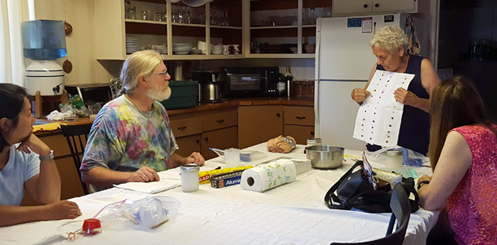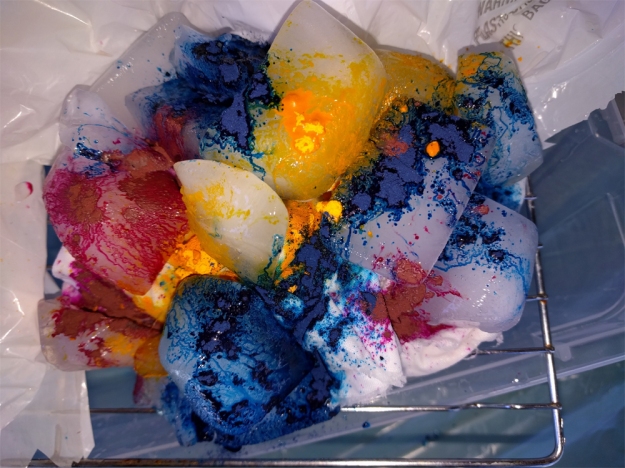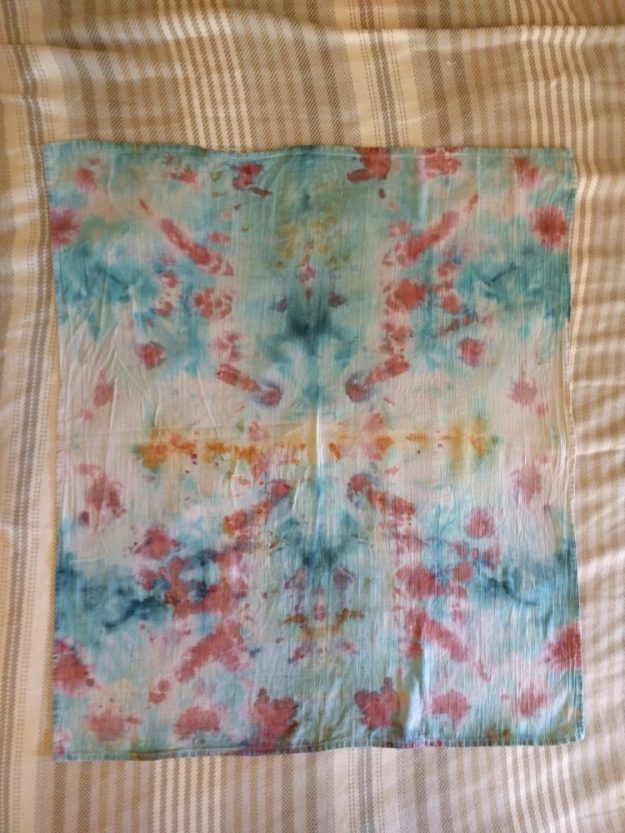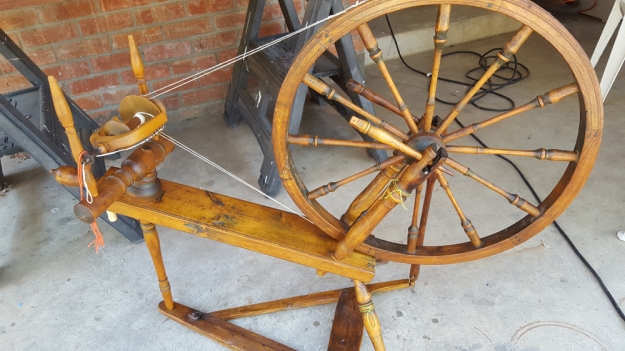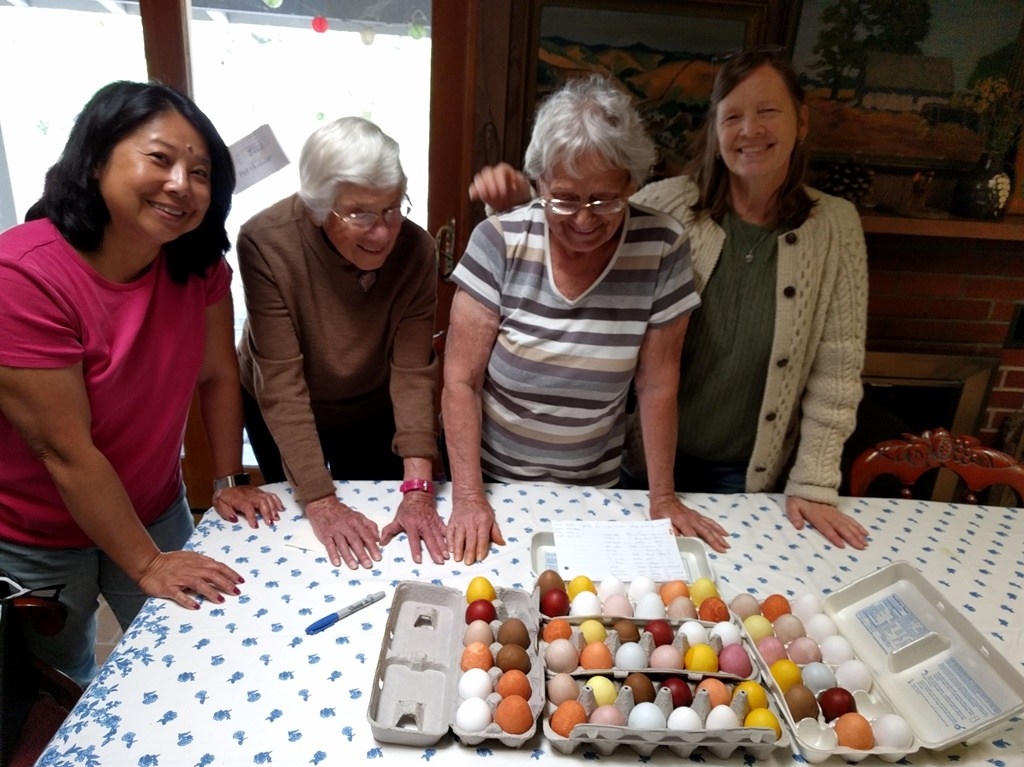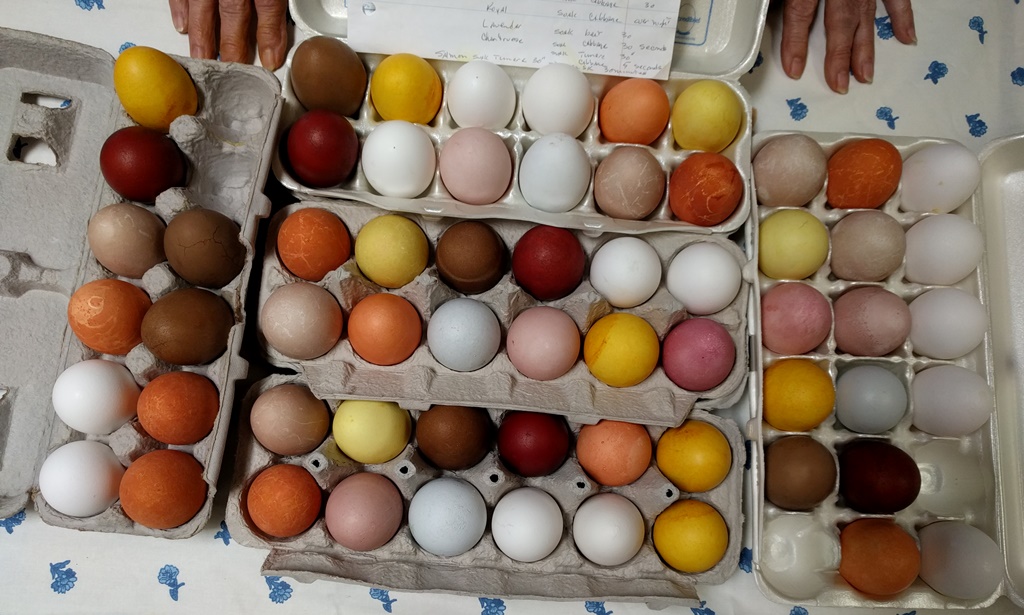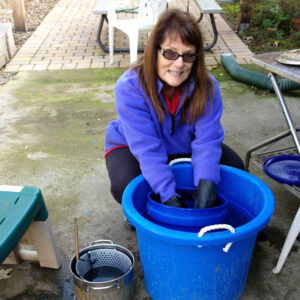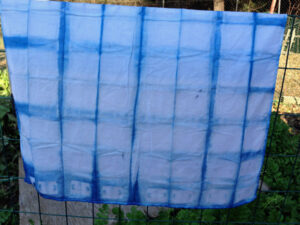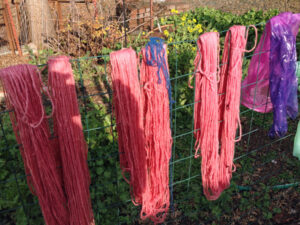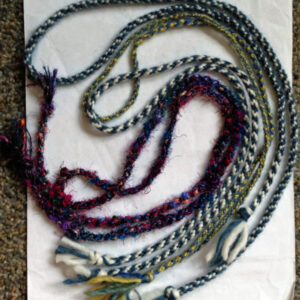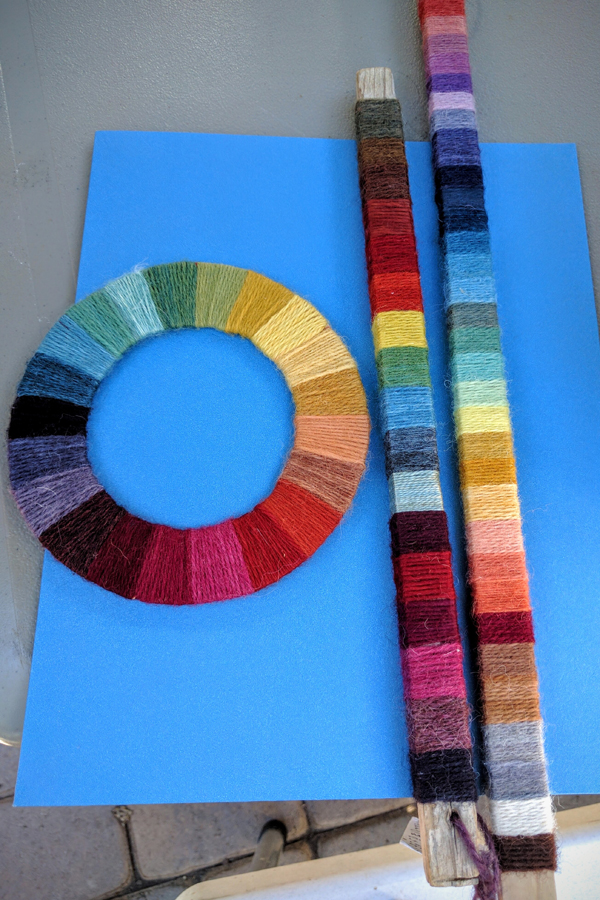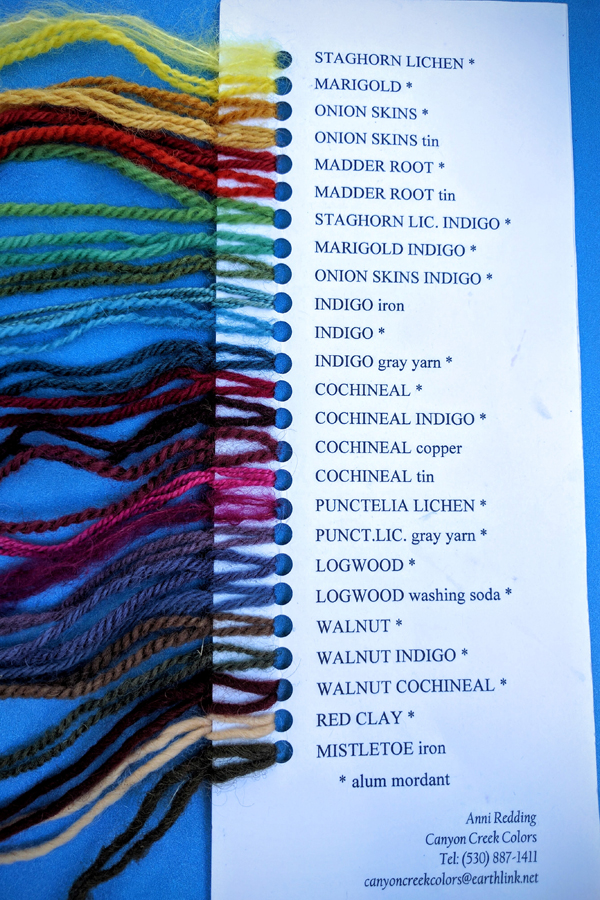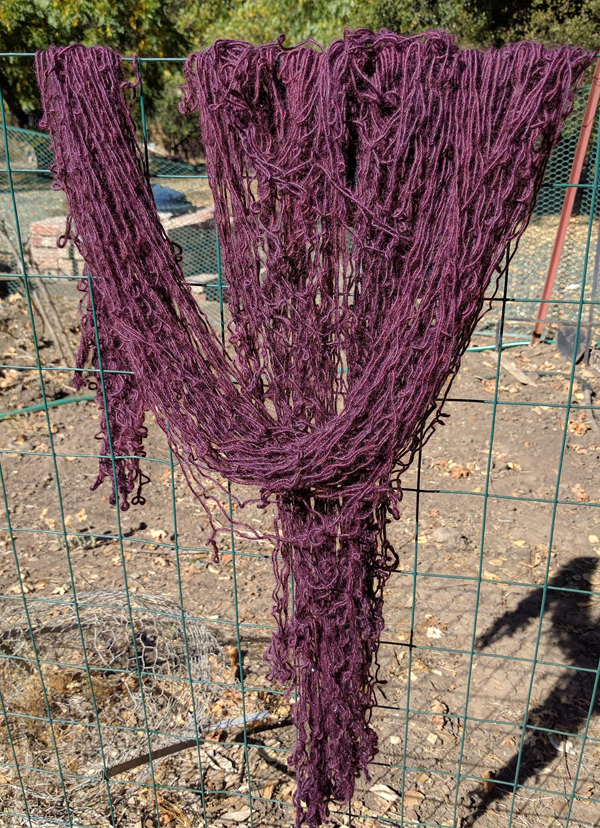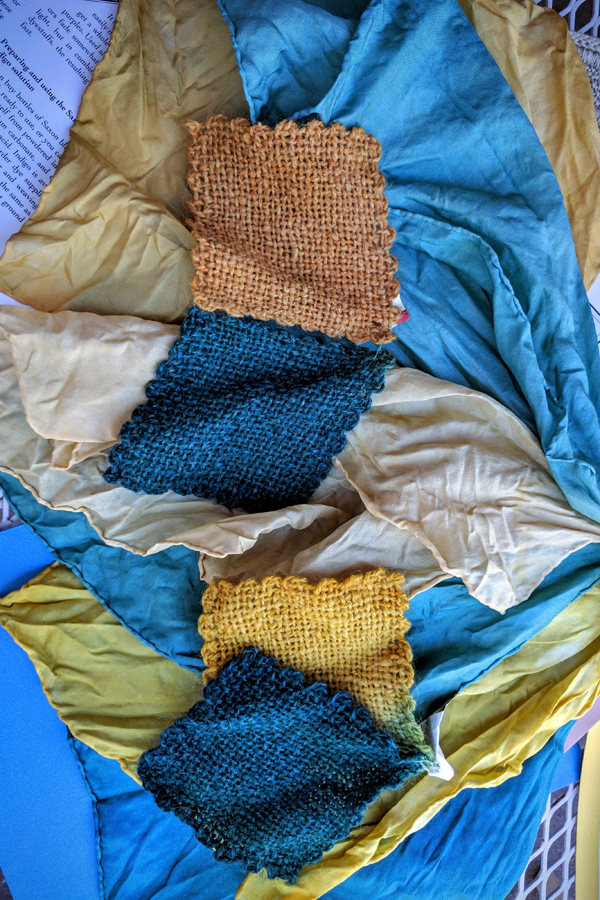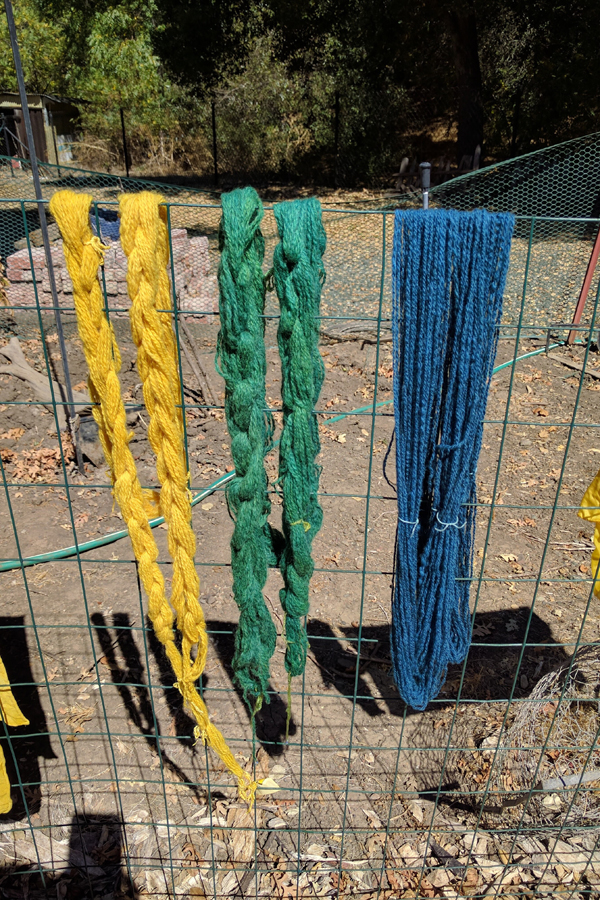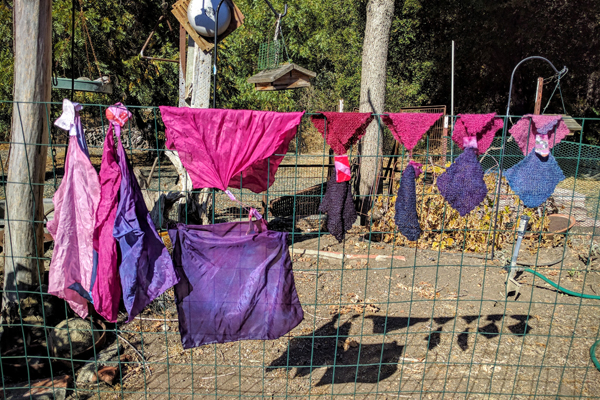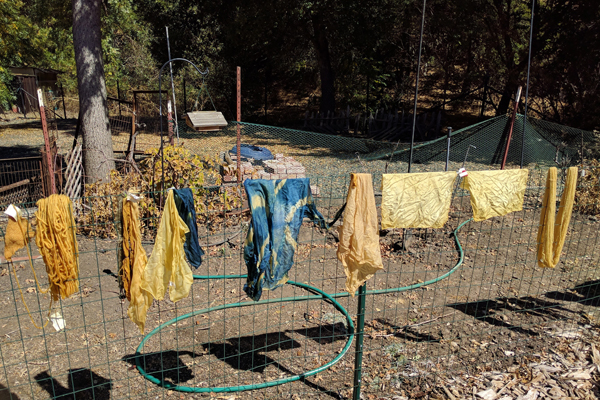Today we surveyed the results of our recent project and divided our skeins among our members. In recent months we have experimented with indigo, weld, osage orange, cochineal, and walnuts. Here is what we have.

- Weld mordanted with soda ash to adjust the pH and boiled (top, left)
- Osage orange – we found that pH matters (bottom, left)
- Osage orange overdyed with indigo (top, second from left)
- Weld overdyed with indigo (top, third from left)
- Indigo overdyed with walnuts (top, fourth from left)
- Indigo dipped three or four times for two minutes (top, fifth from left)
- Indigo dipped once for two minutes (right end)
- Light indigo overdyed in cochineal afterbath (bottom, right)
- Cochineal mordanted with cream of tartar to adjust the Ph dipped for ten minutes (bottom, second from right)
- Cochineal mordanted with cream of tartar to adjust the Ph dipped for one hour (on reel)
- Cochineal overdyed with black walnuts (lower row, center)
- Indigo overdyed with cochineal (bottom, second from left)
We also put together a goodie basket to be sold at the raffle for the Conference of Northern Califiornia Handweavers (CNCH) conference in 2020. Here is what we have so far.
A lovely day with much accomplished!







